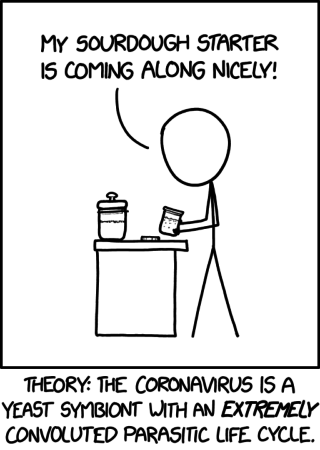- Early Neolithic (ca. 5850-4500 cal BC) agricultural diffusion in the Western Mediterranean: An update of archaeobotanical data in SW France. Agriculture came to southern France from southern Italy around 5700 BC, initially focusing on hulled wheats, then transitioned to naked cereals as it moved inland.
- Improved feeding and forages at a crossroads: Farming systems approaches for sustainable livestock development in East Africa. Adoption of tropical forages at scale can make a big difference to livelihoods in East Africa, but will need careful consideration of agroecological and socioeconomic settings. My mother-in-law unavailable for comment.
- Comprehensive 3D phenotyping reveals continuous morphological variation across genetically diverse sorghum inflorescences. Fancy gadgets and maths show that botanical sorghum races overlap more in morphology than genetics.
- Using clear plastic CD cases as low‐cost mini‐rhizotrons to phenotype root traits. Now do roots.
- A 1000-year-old mystery solved: Unlocking the molecular structure for the medieval blue from Chrozophora tinctoria, also known as folium. 6′-hydroxy-4,4′-dimethoxy-1,1′-dimethyl-5′-{[3,4,5-trihydroxy-6-(hydroxymethyl)tetrahydro-2H-pyran-2-yl]oxy}-[3,3′-bipyridine]-2,2′,5,6(1H,1′H)-tetraone, if you must know.
- Generating a rule-based global gridded tillage dataset. The most amazing thing about this is that there are only 6 types of tillage.
- The global cropland-sparing potential of high-yield farming. We could give up 40% of current farmland if yields of 16 major crops were higher. Unclear what all those farmers would do. Or what kind of tillage they would use.
- Local food crop production can fulfil demand for less than one-third of the population. Still going to need global supply chains.
- Regional differences in agricultural and socioeconomic factors associated with farmer household dietary diversity in India. And national supply chains for that matter.
- Influences of Ingredients and Bakers on the Bacteria and Fungi in Sourdough Starters and Bread. Bakers are part of bread.
- Strategies for reducing per‐sample costs in target capture sequencing for phylogenomics and population genomics in plants. Down to $22 per sample, if you play your cards right.
- Evolutionary insights into plant breeding. When you’ve played those cards, target selective sweeps for introgression, among other things. Oh, and gene editing. Here, read these tweets from one of the authors.
Nibbles: Monticello, Breeding, Seed saving, Neolithic cultures, Ube
- Monticello has heirloom crops. But not only, lest we forget.
- The need for public sector breeders. And their genebanks.
- Let’s all save our seeds.
- Although of course seeds are not enough to define a culinary tradition, now or in the Neolithic.
- Yeah, what exactly is ube? Dioscorea alata? Ipomoea batatas? Your guess is as good as mine. Whatever: purple is the new orange.
Agrobiodiversity everywhere
If that looks familiar, you can help…
Nibbles: Coronavirus double, HSL, Safaa Kumari, Australian forages, Foodways journal
- COVID-19 and Africa’s food?
- FAO has the answers.
- The Heritage Seed Library on the BBC.
- ICARDA’s virologist in The Guardian.
- Tasmania regenerates Australia’s forage seeds.
- New journal: Archaeology of Food and Foodways.
Nibbles: Simran on Svalbard, Egyptian cotton, AgroecologyNow, Breeding trifecta, Rum, Potato double, Banana map, Climbing beans, Vegetable relatives, Cashew industry, Mongolian herders
- Simran Sethi’s Svalbard speech. See everything below for other examples of the importance of agricultural biodiversity.
- Egypt did not take good care of its cotton germplasm, and it went badly for them.
- AgroecologyNow has regular updates. Great name, by the way.
- Breeding for salt tolerance.
- Breeding for photosynthetic rate.
- Breeding as both science and art? Not entirely convincing, but ok.
- Making the most of sugarcane. Yeah, you guessed it, rum. There’s certainly an art to that.
- Not sure what brought on another humble-bragging potato piece, but I’m not complaining. Two pieces, in fact.
- Hey, we’re going to have a world banana map soon. Yes, another one. But this one will be different…
- Beans are climbing the list of important African crops. See what I did there?
- Vegetables have wild relatives too.
- Arizona has some interesting foods, old and new. Including vegetables.
- Cashew is the new avocado.
- Blockchain for Mongolian cashmere? I can’t rule it out.
- Sorghum is set to take over the South. Of the US, that is.
